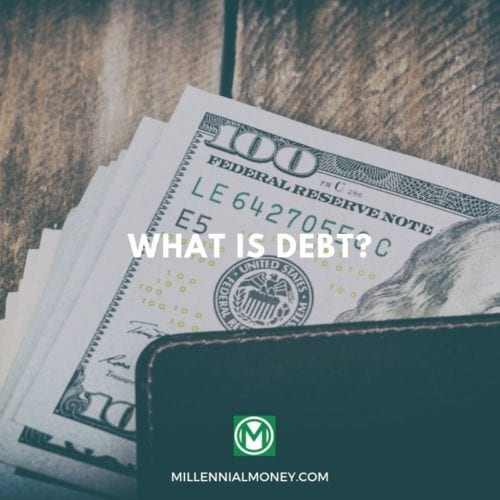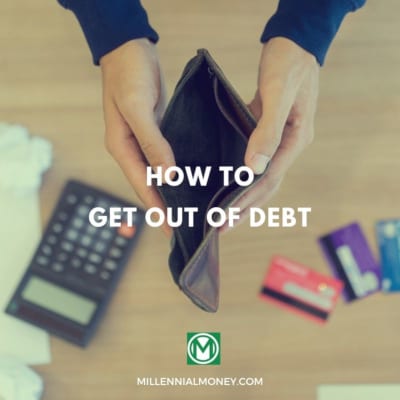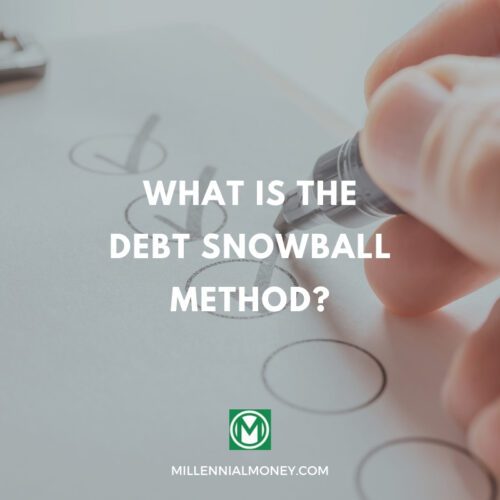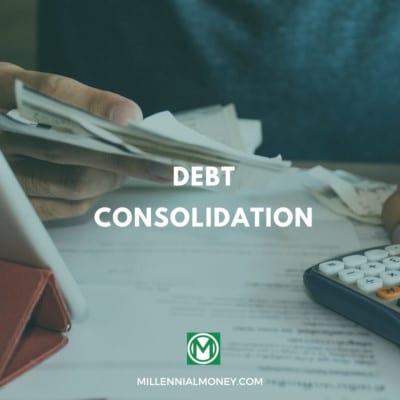It’s time to face an uncomfortable truth: You have a significant amount of credit card debt and/or student loans, and it’s dragging you down. And the longer you remain in debt, the worse it’s going to be.
If you’re in this position, becoming debt-free may seem impossible. But the truth of the matter is that you can do it. You just need a strategy that aligns with your income and budget.
One such strategy to consider is the debt avalanche method, which may be the fastest and most direct way out of your financial rut.
This post explores the debt avalanche method and how it works.
What is the debt avalanche method?
As the name suggests, the debt avalanche method (as opposed to the debt snowball method) involves throwing a large amount of capital all at once at a credit card balance to try to wipe out your debt or even just collect a small win and get an issuer off your back.
If you have $5,000 sitting in the bank and $3,000 worth of debt, the avalanche method would involve making aggressive payments or paying it off in its entirety with a single payment, thereby avoiding unnecessary interest charges.
Under this method, sort your debt from highest to lowest interest, or from highest to lowest balance, and work your way down the list. Once you pay off your first debt, move on to the next one, and keep going until you’re debt-free.
Why use the debt avalanche method?
The basic concept behind the debt avalanche method is that it’s the fastest and most affordable way to get out of debt even though it requires spending a lot of money upfront.
Decrease your overall debt load
There is a strong psychological component to being in debt. It can be depressing making heavy monthly payments over time but not getting anywhere, and many people don’t like this approach for obvious reasons.
The avalanche debt repayment method is like busting out of jail. With a handful of payments or one shot, you could make a credit card or loan go away, sending you out of debt completely, or at least knocking a high-interest credit card off your list and making it easier to pay the rest down.
Boost your credit score
Another benefit to the avalanche method is that it can boost your credit score. It’s not a guarantee, but paying off a large sum of money might move the needle on your report, especially if you’re reducing credit card utilization significantly.
If you’re in debt, you might want to consider the debt avalanche method before shopping for a car or house and applying for a personal loan. In addition to possibly boosting your score, you can free more credit and increase your chances of getting a better interest rate on a loan.
Check your credit score now with a free credit monitoring service.
Save money
One of the best reasons to use the debt avalanche method is to cut down on high interest fees, saving you a significant amount of money over time. Paying down debt with the avalanche method is the most cost-effective way to reduce debt.
When to use the debt avalanche method
The debt avalanche method isn’t for every situation. Here are some signs that the debt avalanche strategy is right for you.
You have high interest rates
The debt avalanche method is best for credit cards carrying large balances, along with higher interest rate loans.
If you have a high amount of debt on a card with a low introductory rate, or a loan with a reasonable rate, you should think twice about the debt avalanche method.
You could be better off paying down the credit card each month and then making a large payment at the end since it doesn’t cost much in interest.
As for the loan, you may actually get penalized for paying it off too early. Some loans come with hefty prepayment penalties, so do your due diligence to understand what you’re getting yourself into.
Your other credit cards are under control
Another potential downside to the debt avalanche method is that it can leave you with less money for other high-interest credit card payments. Only use the debt avalanche method if your other credit cards and loans are under control, meaning they aren’t carrying massive charges.
If you spend all your savings paying off one credit card debt but still have several other high-interest loans (and no money left to pay them down), you’re in more trouble than when you started.
You’re happy with your credit score
Keep in mind that not all debt is bad. In fact, for people trying to build credit, debt can actually be beneficial.
Lenders are going to want to see that you can consistently make payments over time before sending you money. If you’re trying to build credit with a car loan, you may want to stick to a slow and steady pace.
If you’re happy with your credit score, the debt avalanche method could be just what the doctor ordered.
How to use the debt avalanche method
- Run a debt inventory
- Target the highest interest rate
- Figure out how much you can spend
- Use savings to make a payment
- Continue paying your other debts
1. Run a debt inventory
Take a look at all of your accounts and add up your total amount of debt. List all of your credit cards and loans and try to determine how much you’re paying on a monthly basis.
This activity can be a shocking experience if you’re not actively tracking and monitoring your debt. If you have several credit cards, you may be in for a surprise.
However, it’s a necessary exercise if you want to get a handle on your financial situation. This is a habit you should be practicing regularly.
2. Target the highest interest rate
Next, figure out the loan with the highest interest rate and highlight it. This is the card you’ll want to focus on the most.
3. Figure out how much you can spend
Then, take a look at your bank account and your monthly budget. Determine if you’re maximizing your monthly debt payments or if you should be making more of them.
While doing so, consider looking at ways of allocating more money into debt payments.
For example, if you have a lot of debt, you may not be in a position to save or invest quite yet. It could make more sense to put that money into debt relief instead.
4. Use savings to make a payment
Next, take a look at how much you have sitting around in flexible savings accounts and consider applying that to debt.
This can be a great strategy because it can help you pay down a card without bottoming out your account. You could take a chunk of money from savings, make a payment, and then combine that with an aggressive monthly payment plan.
If you do this a couple of times, you could pay down a card quickly without going broke in the process.
5. Continue paying your other debts
Once you pay off your card or reduce your overall debt, don’t ease up on the gas. You must keep pressing forward until the remainder of your debt is gone.
Oftentimes, people will cut their debt in half or make a large stride only to think they’re out of the woods. So, they’ll rack up more charges anticipating they can pay their debts at a later date.
This method can set you back and make it a lot harder to reach your goals. Once you do some damage with a large payment, finish the job and get rid of the rest of your debt.
Debt avalanche vs. debt snowball method
The debt snowball method is a little bit different from the avalanche method.
Popularized by Dave Ramsey, the snowball method involves paying down bills in order from the smallest balance to the highest balance. The interest rate does not get factored into the equation.
Suppose you have a credit card with a $250 balance, one with $1,000, and another with $1,500. With the snowball method, you would make all your minimum payments but put the most amount of money towards the smallest debt first to try and get rid of it.
Which option is better for you?
Not all financial experts agree on the best option for how to get out of credit card debt.
Only you can determine whether you should try the snowball method or the avalanche method as a debt repayment plan. Take a hard look at your financial situation and determine which approach aligns with your needs and preferences.
To make the process easier, check out Credit Karma’s debt calculator.
Frequently asked questions
What is debt consolidation?
Debt consolidation involves taking out a personal loan with a lower interest rate and using the money to pay off all your credit cards.
By doing so, you potentially benefit from having one loan with a rate significantly lower than what you’re paying in credit cards. It’s easier to deal with than having many different cards with varying amounts of debt.
Just make sure to thoroughly read the terms of the agreement before you take out a loan. That way, you will know what you’re getting involved with ahead of time.
What is a debt repayment plan?
A debt repayment plan is a plan that helps you get out of debt. Using a debt repayment plan, you can organize your personal finance situation and reduce the amount of time you remain in debt.
As an added bonus, a debt repayment plan can also lower the amount you pay in high-interest debt.
Do I need to stick to a budget?
The short answer is “yes.” There’s no harm in sticking to a budget.
It may seem uncomfortable at first. But the truth is that sticking to a budget can get you out of debt faster and prevent you from getting back into it.
Everyone should have a budget, regardless of their financial situation.
What is a balance transfer?
A balance transfer involves moving a balance from one credit card to another. Often, credit cards offer promotions for new customers, including introductory interest rates that are far lower than average.
Making a balance transfer to a card with the lowest interest rate could save you a lot of money in monthly payments. However, keep in mind that promotional rates always end, and it’s super important to pay off your balance before it does.
The Bottom Line
If you’ve been making minimum monthly payments for a while and aren’t seeing the kinds of results you want to see on your highest-interest debt, it could be time to get some quick wins and try the avalanche debt payoff method.
This strategy puts extra cash back in your pocket by eliminating heavy monthly payments. You’ll have extra money to put toward everyday purchases like groceries and household items and more to put into long-term savings and investing.
If your goal is financial independence, you first need to climb out of debt to get there. By developing a debt repayment plan and sticking to it, your debts can be behind you before you know it.





No comments yet. Add your own